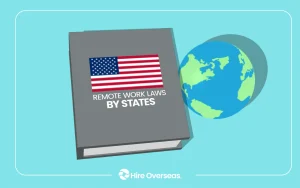So you’ve made the leap. You’re a digital freelancer, a content creator, the master of your own domain. The freedom is intoxicating. But then… tax season looms. And suddenly, the straightforward world of W-2s and employer-withheld paychecks feels like a distant, blissful dream.
Here’s the deal: the IRS doesn’t see your YouTube channel, your freelance design gigs, or your paid newsletter subscriptions as a hobby. They see a business. And that means a whole new set of rules. Let’s untangle the tax implications of the creator economy together, so you can keep more of your hard-earned cash and sleep soundly.
Your New Tax Identity: Business Owner, Not Employee
This is the fundamental shift. As an employee, taxes are automated. As a creator or freelancer, you’re suddenly the CEO, CFO, and entire accounting department. Your income arrives as 1099-NECs, PayPal transfers, and direct deposits—none of it has taxes taken out. It’s all yours. For now.
This is what’s known as self-employment income. And it comes with a double-whammy you need to be ready for: the self-employment tax. This covers your Social Security and Medicare contributions. As an employee, your company pays half. When you’re the boss, you pay both halves—a total of 15.3% on your net earnings.
Estimated Taxes: The “Pay-As-You-Go” Reality Check
You can’t just wait until April to settle your bill. The IRS operates on a “pay-as-you-go” system. That means you’re required to make estimated tax payments quarterly. Honestly, this trips up more new creators than anything else.
Think of it like a subscription fee for being in business. Four times a year, you’re sending a payment to the IRS based on what you expect to owe. Miss these, and you could face underpayment penalties, even if you pay everything in full come April.
Turning Expenses into Assets: The Deduction Game
This is the fun part, the silver lining. Every dollar you spend on your business can reduce your taxable income. The key is that expenses must be both ordinary and necessary for your line of work. Let’s break down some common ones for digital freelancers.
Home Office Deduction: Your Command Center
If you have a space in your home used exclusively and regularly for your business, you can deduct it. You can use the simplified method (a standard rate per square foot) or the regular method (calculating the actual percentage of your home expenses like rent, utilities, and insurance that the office occupies).
Tech and Tools of the Trade
Your laptop, microphone, editing software subscriptions, website hosting, and even that ergonomic chair? Those are likely deductible. You know, the tools you simply couldn’t do your job without.
Education and Professional Development
Bought a course on advanced video editing? Attended a virtual conference on social media marketing? These costs to improve your skills in your current field are generally deductible. It’s an investment in your growth that the tax code, surprisingly, encourages.
Keeping Your Financial House in Order
Staying organized isn’t just about peace of mind; it’s your first line of defense in an audit. A shoebox full of receipts won’t cut it.
Separate your finances. Open a dedicated business bank account. The moment you do, your financial life becomes infinitely clearer. It’s the single best piece of administrative advice for any new creator.
Track everything. Use a spreadsheet, an app like QuickBooks or FreshBooks, or even just a dedicated notebook. Log every payment you receive and every business-related expense you incur. Date, amount, vendor, purpose. Be meticulous.
Here’s a quick table of common, and sometimes overlooked, deductible expenses for creators:
| Category | Examples |
| Software & Subscriptions | Adobe Creative Cloud, Canva Pro, Email marketing tools, Project management apps |
| Equipment | Cameras, lighting, microphones, computers (often deducted over time via depreciation) |
| Marketing & Promotion | Boosted posts, Facebook/Google ads, costs for running a giveaway |
| Professional Services | Payments to a virtual assistant, graphic designer, or—yes—a tax professional |
| Bank & Transaction Fees | PayPal/Stripe fees, business account monthly charges |
Beyond the Basics: Special Considerations
The creator economy is unique. Your income streams might be a tangled web of affiliate marketing, brand deals, digital product sales, and platform payouts like the YouTube Partner Program. Each stream is still self-employment income, but you need to be able to account for them separately. It’s a good practice, honestly, to understand which of your revenue streams are most profitable after accounting for the time and expenses they require.
And then there’s state tax. If you’re a digital nomad or have clients across the country, you might create a “nexus”—a tax presence—in other states. This is a complex area and, frankly, one where consulting a pro can save you a massive headache.
Knowing When to Call in the Cavalry
Sure, you can probably handle your taxes yourself with software, especially in your first year. But as your income grows and diversifies, the cost of a qualified CPA or tax advisor who understands the creator economy is an investment, not an expense.
They can help you with things like setting up a retirement plan (a SEP IRA or Solo 401(k)), advising on whether to form an LLC for liability protection, and ensuring you’re maximizing every possible deduction. They’re your guide through the maze.
The landscape of digital work is always shifting. New platforms, new revenue models… and the tax code is always playing catch-up. Embracing the financial side of your creativity isn’t a distraction from your art; it’s the foundation that lets it thrive long-term. It’s the unglamorous, absolutely critical work of building a real, sustainable career on your own terms.







More Stories
Cryptocurrency, NFT, and DeFi Transaction Reporting for Casual Investors: A (Mostly) Painless Guide
Navigating State and Local Tax Obligations for Fully Remote and Hybrid Workforces
The Impact of Tax Reforms on Financial Planning